pp 500 GeV Year 2013 Dihadron Correlation with EEMC-dijet data
Motivation:
I wonder if ridge exists as long as there are enough number of particles in total. For example, if there is dijet pair in forwards regions which generates lots of particles, would there be a ridge at mid-rapidity?
See follow-up on high multiplicity trigger and MB trigger:
drupal.star.bnl.gov/STAR/blog/yili/pp-500-gev-year-2012-dihadron-correlation-tofmult4tofmult3vpd-data
drupal.star.bnl.gov/STAR/blog/yili/pp-500-gev-year-2012-dihadron-correlation-vpdmb-nosmd-0
Similar result also seen in pythia simulation: drupal.star.bnl.gov/STAR/blog/yili/pp-510-gev-pythia-dihadron-correlation-hardqcd-20151007
See master page: drupal.star.bnl.gov/STAR/blog/yili/master-page-dihadron-pp-500-gev
Dataset:
pp 500 GeV
Year 2013
filetype=daq_reco_MuDst,events!=0,trgsetupname=pp500_production_2013,filename~st_physics,production=P14ig,storage!=hpss,sanity=1
trigger id = 430418 (EEMC-dijet) : either an EEMC jet patch above 32 (nominally E_T > 6.4 GeV) in the upper half of the detector in coincidence with a second jet patch above 16 (nominally E_T > 2.6 GeV) in the lower half of the EEMC, or the reverse.
Cuts:
|Vz|<50 cm
nHits >= 25 points
nHits/nHitsPoss >=0.51
|dca|< 3 cm
|eta|<1
Method:
Dihadron Deta-Dphi correlation.
Not normailzed (a.u.). mixed event corrected.
All TPC tracks are required to matched to BEMC of BTOF to reduce pileup effect.
Two cases are compared: multiplicity in TPC |eta|<1 is Ntrk<=15 vs. Ntrk>=20
1<pT<3 GeV/c for both trigger and associated particles
Mixed event:
<= 5 tracks difference in Ntrk in TPC
<= 5 cm difference in Vz
Result:
1. Deta distribution with |Dphi|<1
Ntrk>=20,
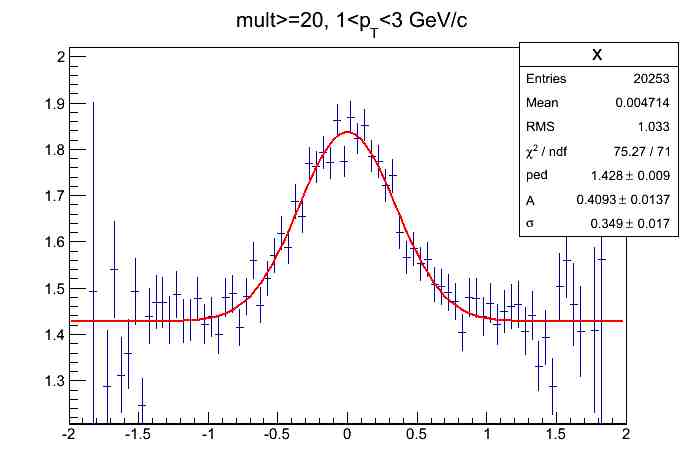
Ntrk<=15,
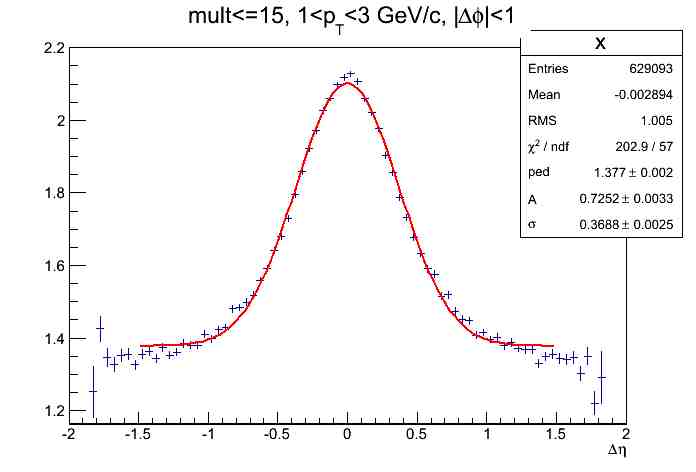
The jet peak in Ntrk<=15 is a little bit wider than Ntrk>=20 case, but they are consistent with 1-sigma uncertainty.
2. dphi distribution
Ntrk>=20, 1<|Deta|<1.5
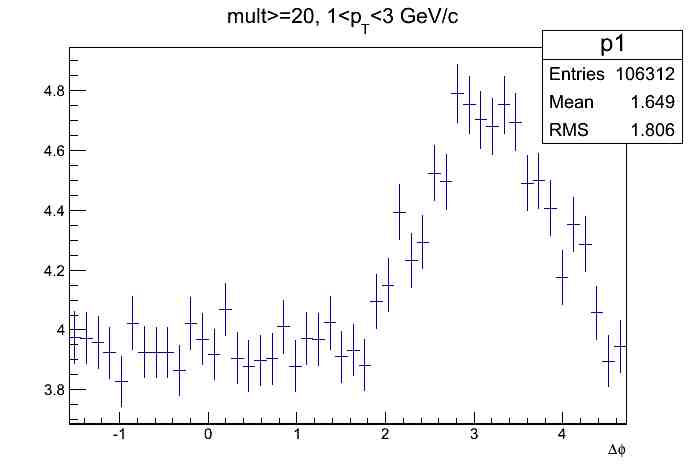
No bump on near side.
Ntrk<=15, 1.3<|Deta|<1.7
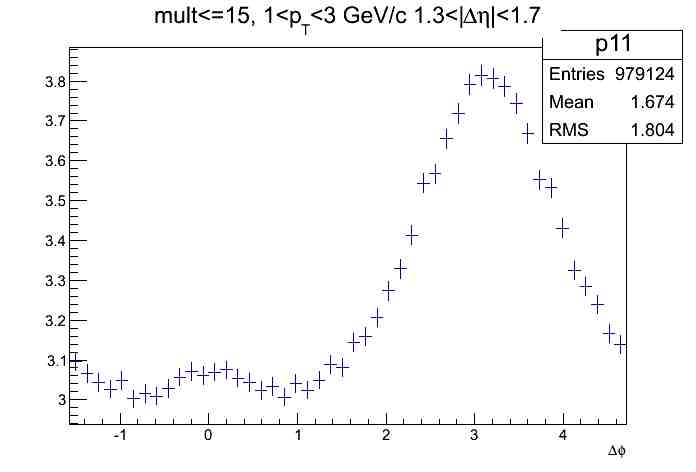
There is near-side bump for small multiplicity. Is it jet?
2D Deta-Dphi for Ntrk<=15 case
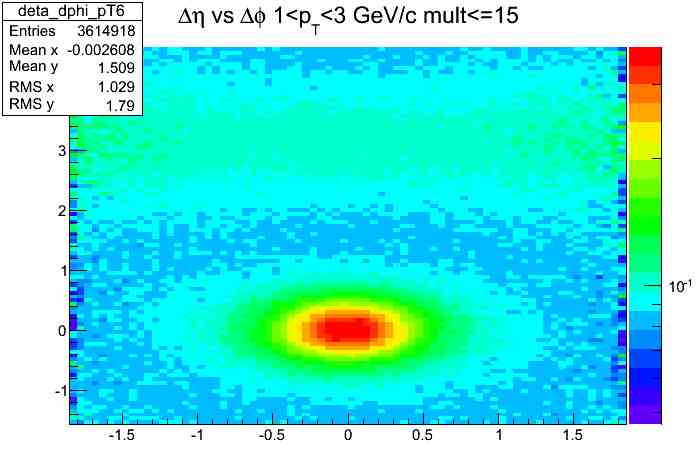
Maybe the near little bump is acutally from the near-side jet..
Refmult distribution for EEMC-dijet triggerd data. (events < 2 tracks are not included in histogram)
refmult is read from Mudst directly, not pile up removal matching.

Discussion:
Moved to higher trigger pT for jet:
4<ptrigT<6 GeV/c
0.15<passocT<3 GeV/c
Delta eta distribution with |Delta phi|<1
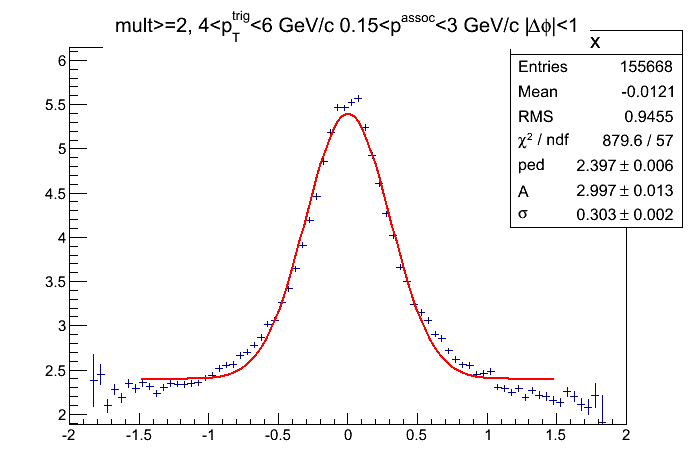
Gaussian is not a good fit.
Delta phi distribution for 1.3<|Delta eta|<1.5
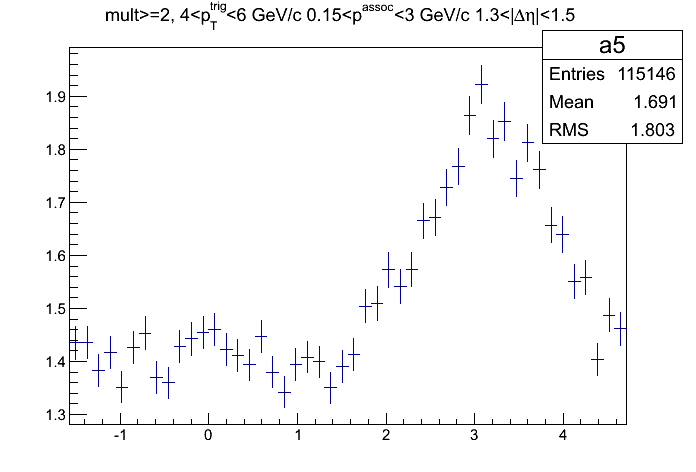
Delta phi distribution for 1.<|Delta eta|<1.5

Too close thus enters the near-side jet peak
- yili's blog
- Login or register to post comments
